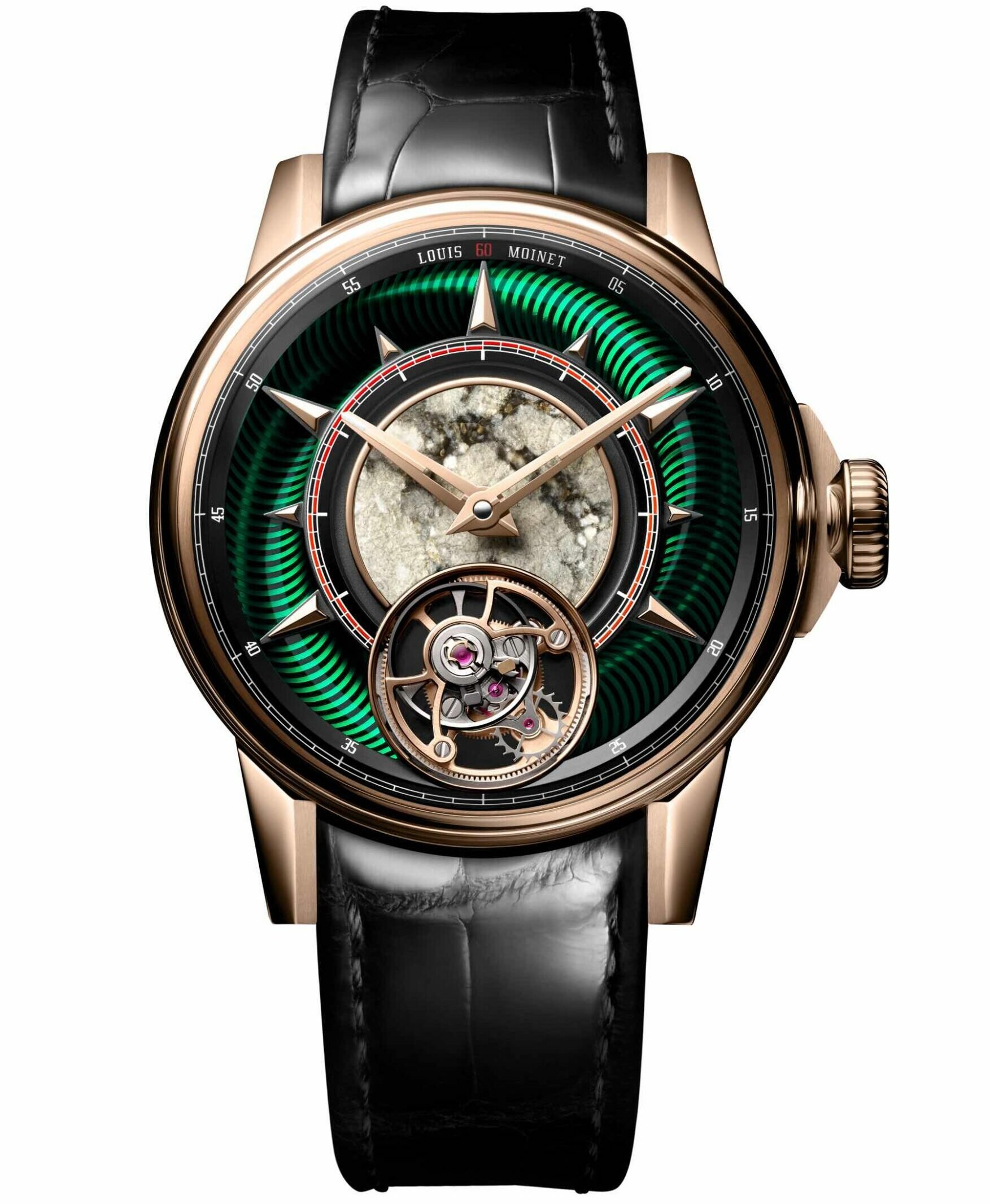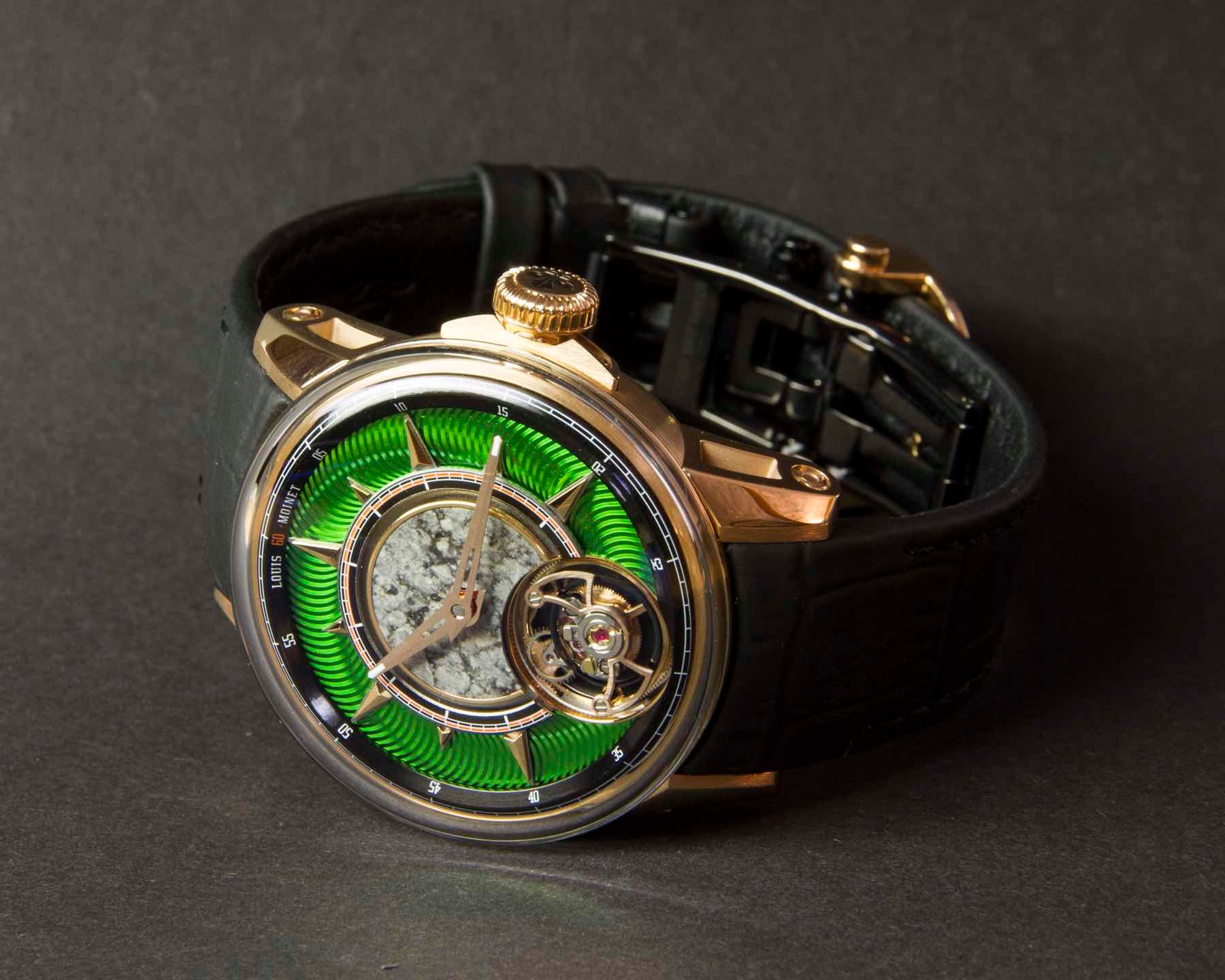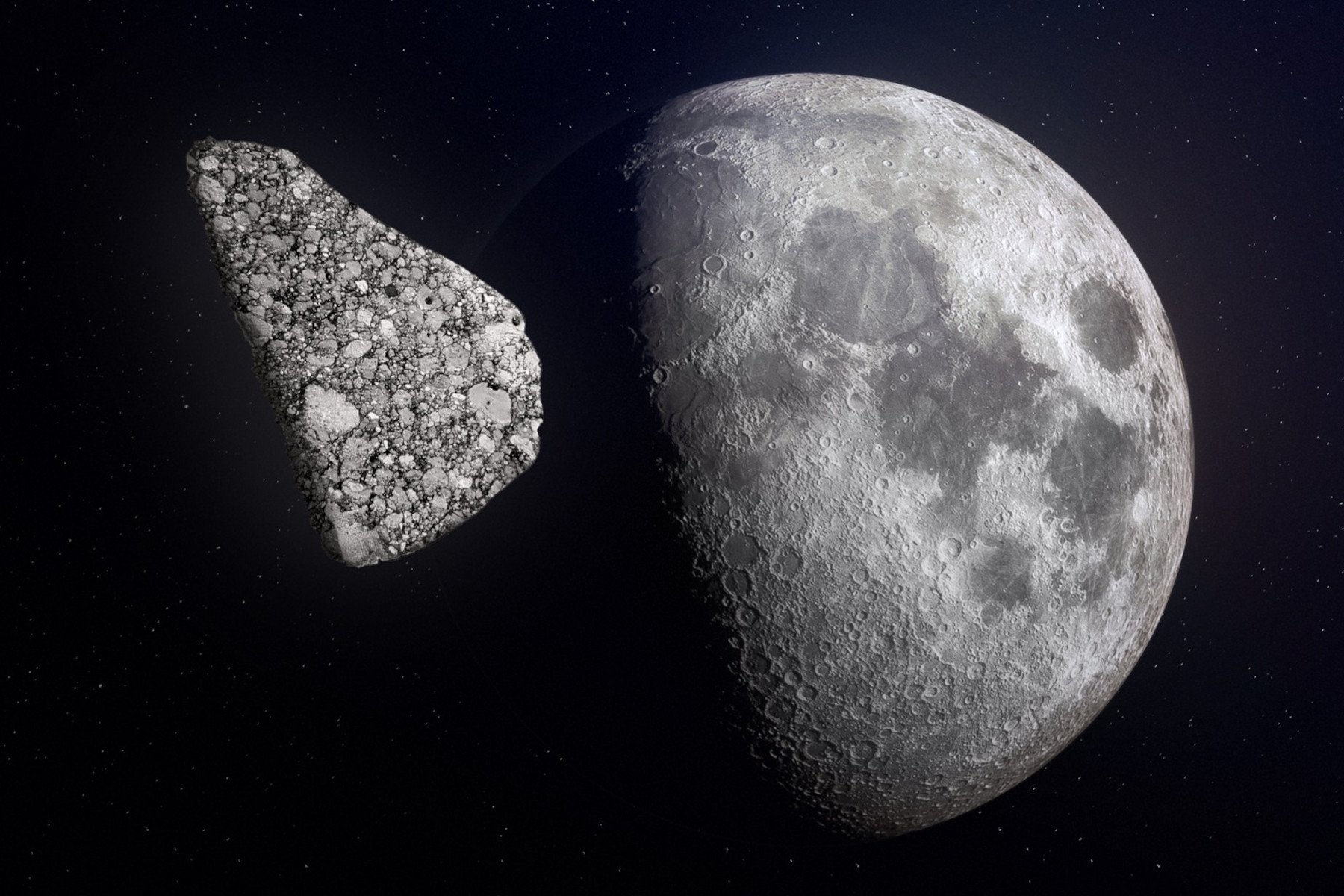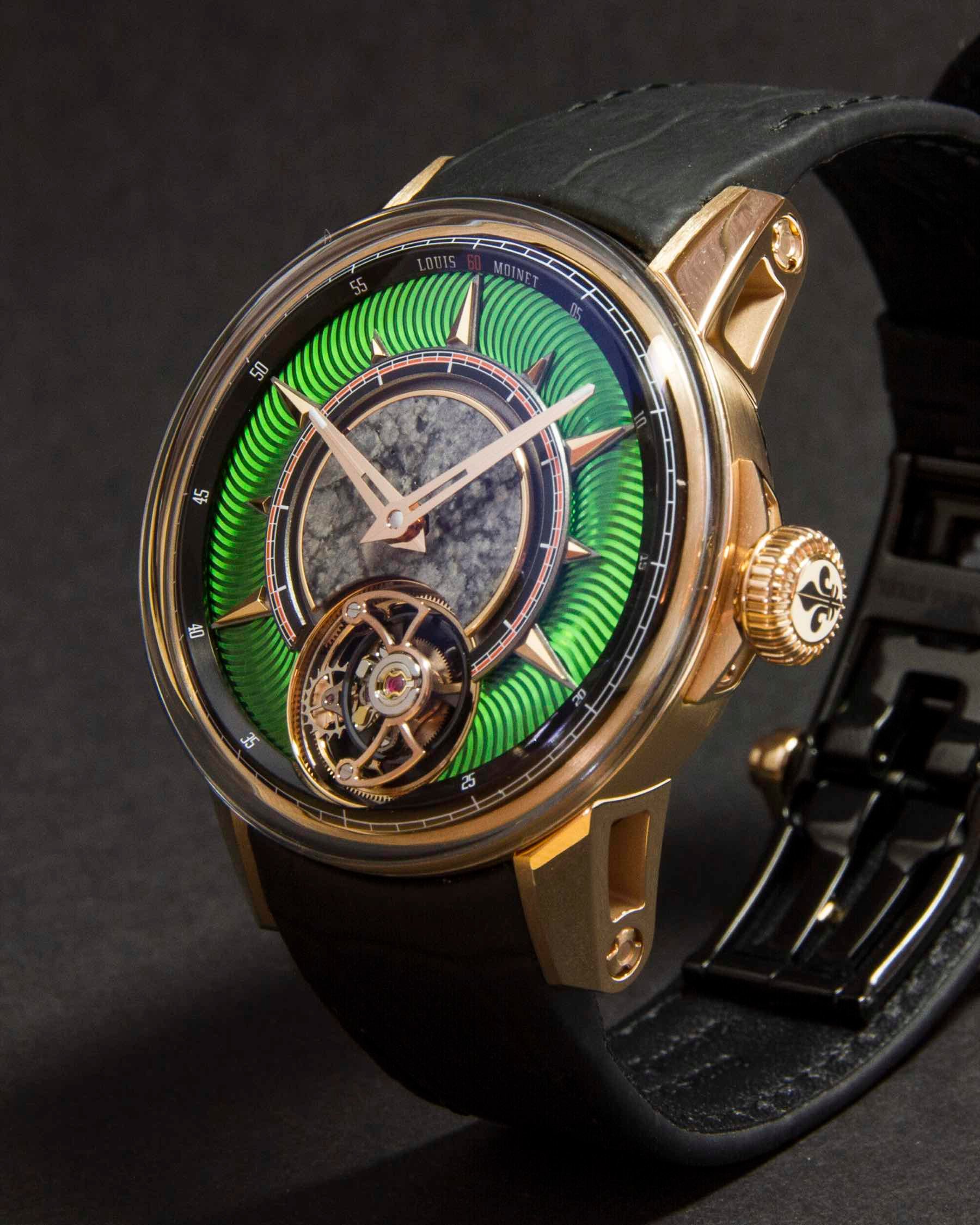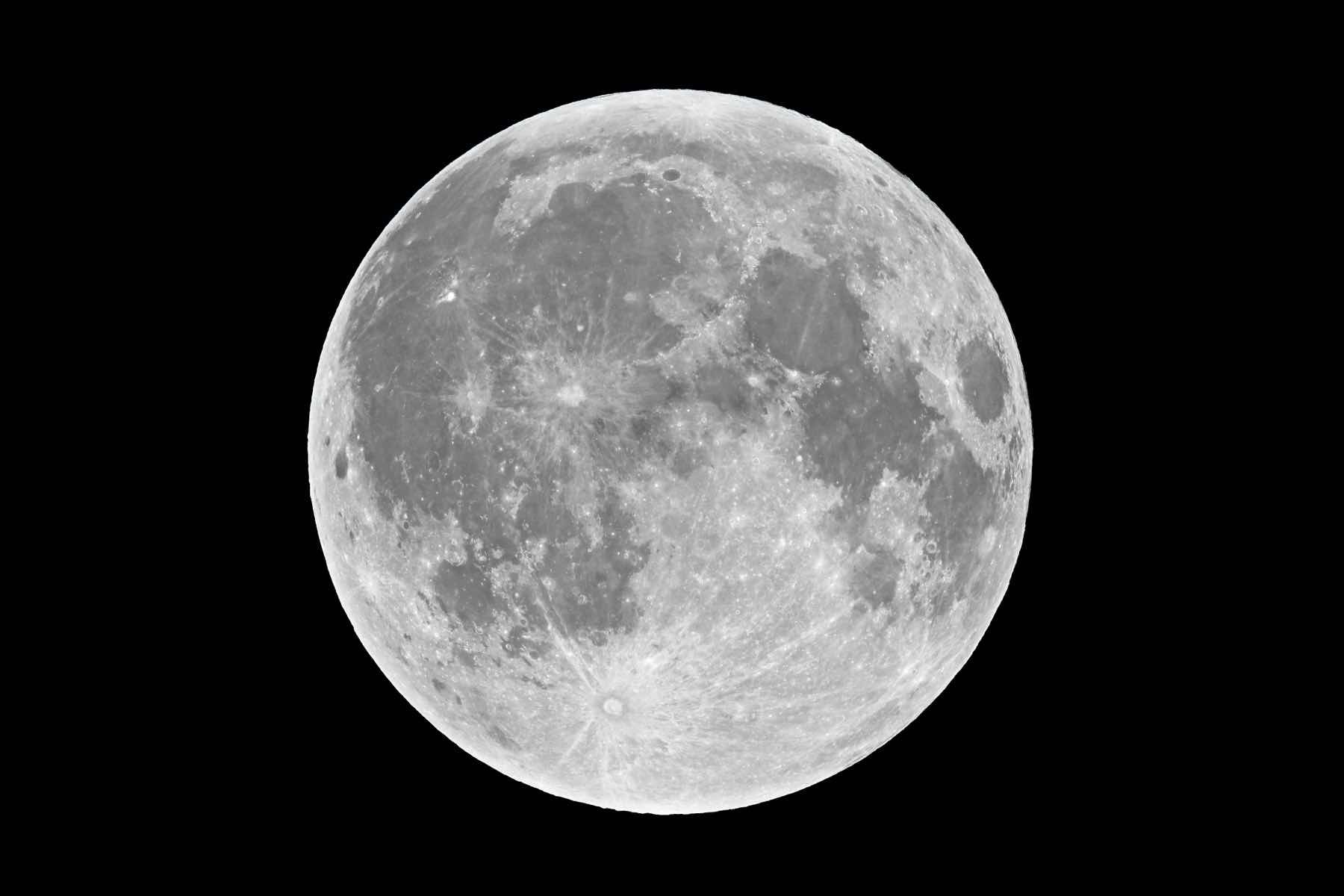Introducing: Louis Moinet Jules Verne Tourbillon “To The Moon”
Introducing a new masterpiece from the artists at Louis Moinet — the Jules Verne Tourbillon “To the Moon.” As one of the true independents of artisanal Swiss watchmaking, Louis Moinet is a brand we follow closely. Today’s release is something rather special and limited to just eight watches. Its USP? How about a combination of a tourbillon and a piece of the Moon to wear on your wrist?
Let’s have a closer look at this latest Louis Moinet creation, for which you can pick your preferred piece of lunar material if you are lucky enough to snag one.
Louis Moinet Jules Verne Tourbillon
Let me kick things off with the watch itself. The Jules Verne Tourbillon will be released in three variants. This “To the Moon” is the first. “Under the Sea” and “Mystery Island” will follow later. The difference is at the heart of the dial, which we will explore further later.
The Jules Verne Tourbillon measures 40.7mm across and is executed in 18K rose gold. The case features rather unique open-worked lugs with a 20mm spacing. Inside ticks an in-house caliber with an off-center flying tourbillion, visible through the dial. The hand-wound caliber is outfitted with twin barrels in a volte-face configuration. This means they are stacked on top of each other and simultaneously unwind in opposite directions. The resulting power reserve is 96 hours.
A tall, domed sapphire crystal puts the main attraction of the watch — its dial — front and center. And what a dial it is. As if a tourbillon isn’t enough to gaze at, you get an intricate guilloché pattern around the perimeter of the dial. It is varnished in a rich translucent green. And then, at the heart of it all, you get your very own slice of the Moon.
The lunar material on the Jules Verne Tourbillon
The upcoming versions of the Jules Verne Tourbillon will feature Opal and Lapis Lazuli inserts. This model, however, comes with a slice of lunar meteorite. A total of eight of these will be made, and you can pick your desired piece of meteorite when ordering. You wouldn’t just want any old bit of the Moon, right? You want your preferred bit of the lunar surface.
Moon meteorite is something quite special. When an asteroid strikes the Moon, it results in a crater, and debris from the displaced lunar surface flies off into space. Some of it will travel through our atmosphere and hit Earth. This phenomenon, however, is quite rare. Most of these lunar meteorites are found in the Antarctic, but if the US or Japanese governments find them, they retain governmental ownership. Only a few pieces found in Africa and the Sultanate of Oman are ever available for private ownership. There is a total mass of less than 200kg of the lunar meteorite on Earth. This means the amount available for projects like Louis Moinet’s is exceedingly small.
The lunar meteorite on the Jules Verne Tourbillon has a beige/gray hue and strong marbling effects. This suits the rose gold and green of the dial very well. Don’t expect your typical Widmanstätten meteorite patterns here, though. Those only occur in acid-treated nickel/iron meteorite material. The lunar meteorite used here is much more similar to basalt in chemical composition, so this is more like a stone dial in texture.
Initial impressions of the Jules Verne Tourbillon “To the Moon”
I am always slightly apprehensive when watch brands use exotic materials like this. The result is often more of a “because we can” exercise than a betterment of the design. I am happy to find this isn’t the case here. The lunar meteorite is part of a rather intricate aesthetic, in which the material actually serves as a resting point for the eye. This is interesting since it puts the material front and center in a different way.
Most designers would be tempted to keep the dial as simple as possible to put the spotlight on the piece of the Moon. This is quite the opposite here, with the intricate tourbillon and flashy green guilloché ring drawing your initial attention. Only then does your eye flow to the comfortingly natural-looking material at the heart of it all.
I also particularly enjoy how you can pick your piece of lunar meteorite on Louis Moinet’s website. It really drives home how small a batch of eight pieces actually is – furthermore, each watch has “ONE OF EIGHT” engraved on the case back to emphasis the uniqueness of the collection. At the time of writing, two have been sold, so the remaining six pieces of meteorite trigger some FOMO. From an aesthetic point of view, the different pieces really do change the character of the watch. I think my pick would be lunar meteorite B, with its bright beige surface.
Pricing and availability of the Louis Moinet Jules Verne Tourbillon “To the Moon”
The price of the Jules Verne Tourbillon is on request only. The six remaining pieces are available from the Louis Moinet website now. You first pick your desired piece of lunar meteorite and then place the purchase request. And if you do, with only eight watches available and each one being a unique piece, you can rest assured that you are very, very unlikely to run into someone wearing the same watch as you.
What do you think of the new Louis Moinet Jules Verne Tourbillon “To the Moon”? Let us know in the comments below.
This is a preferred-position post. Learn more.

